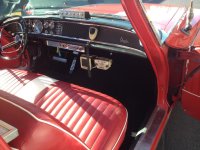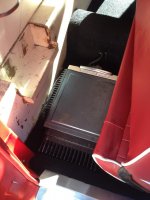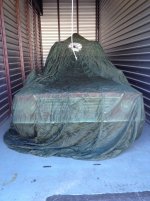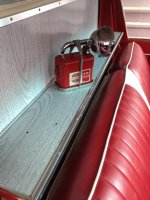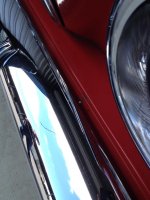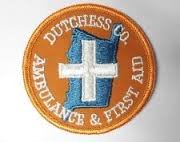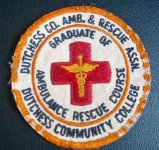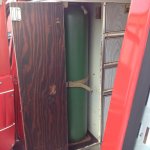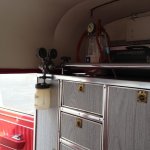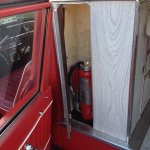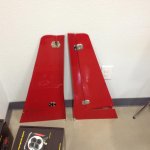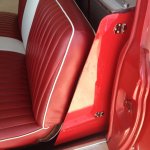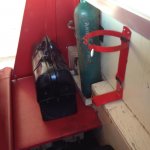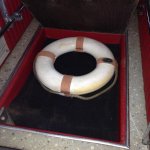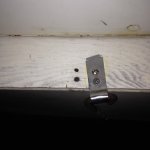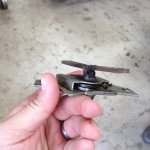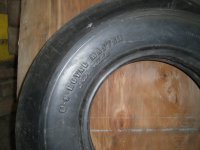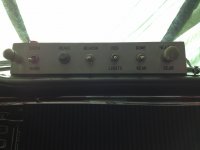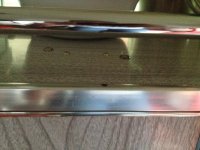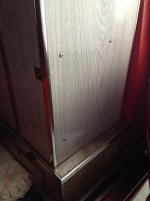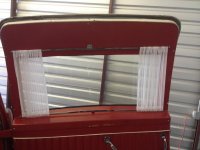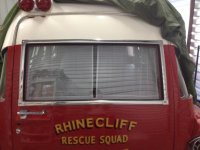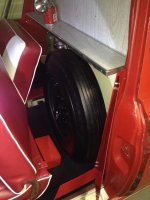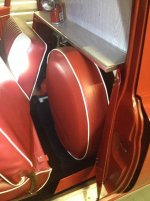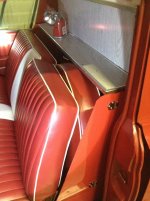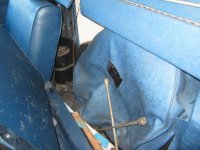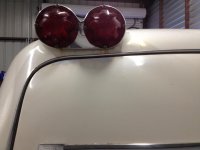Nicholas Studer
PCS Elected Director 2022-2025
Fun progress on the Rhinecliff FD Rescue Squad 1963 Pinner-Chrysler ambulance.
1. New carpet's in place. Some may know the carpet had gotten wet from a chronic water leak, and Paul had cut it up a bit in the process. Unfortunately, the RockAuto standard stuff wasn't a good fit. We wanted to save the original heel pad too - which required a trip to the upholestery shop - who hooked us up for the privilege of working on the Pinner family's craftsmanship. We're very happy - looks just as good - if not better than new.
2. Motrac is back! Research coupled with annoying trial and error underneath the dash determined where the mounting brackets had been for the speaker and control head. Cable for the antenna was still there - the holes for the Low-Band Motrac itself were still present. With enough deduction and some time on eBay - all the major components were found. More importantly - the local Motorola dealer (in business since the 1950s) had folks experience with the Motracs and thrilled to work on it. Believe it or not - our Motrac is in fully functional order right now. They were even able to salvage a damaged pre-1965 metal connector cable so we're not tarnishing the vehicle with an inaccurate newer plastic cable. We had them disconnect the main tube in it so it does not draw a massive current draw - no reason for that when all we really want is for the red light to glow if mic is depressed. Otherwise - same as when first in service - November 1963. Well, besides the newer mic that we will replace shortly. And yes, we'll be replacing the damaged/near-gone water-slide decals on the dash that show the radio call sign and station ID as soon as we find suitable near-exact replacements.
3. A dusty environment in the pseudo-desert (regardless of indoor storage) - requires a blanket. A T-10D parachute canopy works well and seems rather fitting.
Thanks and kudos again to Paul Steinberg for fixing all of the mechanical nightmares few others would've been able to tackle. I surely wouldn't be able to worry about these minor details on what is a solid car above all. Next stop - full stocking of the ambulance with equipment as described in recently discovered documents from when it was placed into service! Hopefully in time for the meet in June...
1. New carpet's in place. Some may know the carpet had gotten wet from a chronic water leak, and Paul had cut it up a bit in the process. Unfortunately, the RockAuto standard stuff wasn't a good fit. We wanted to save the original heel pad too - which required a trip to the upholestery shop - who hooked us up for the privilege of working on the Pinner family's craftsmanship. We're very happy - looks just as good - if not better than new.
2. Motrac is back! Research coupled with annoying trial and error underneath the dash determined where the mounting brackets had been for the speaker and control head. Cable for the antenna was still there - the holes for the Low-Band Motrac itself were still present. With enough deduction and some time on eBay - all the major components were found. More importantly - the local Motorola dealer (in business since the 1950s) had folks experience with the Motracs and thrilled to work on it. Believe it or not - our Motrac is in fully functional order right now. They were even able to salvage a damaged pre-1965 metal connector cable so we're not tarnishing the vehicle with an inaccurate newer plastic cable. We had them disconnect the main tube in it so it does not draw a massive current draw - no reason for that when all we really want is for the red light to glow if mic is depressed. Otherwise - same as when first in service - November 1963. Well, besides the newer mic that we will replace shortly. And yes, we'll be replacing the damaged/near-gone water-slide decals on the dash that show the radio call sign and station ID as soon as we find suitable near-exact replacements.
3. A dusty environment in the pseudo-desert (regardless of indoor storage) - requires a blanket. A T-10D parachute canopy works well and seems rather fitting.
Thanks and kudos again to Paul Steinberg for fixing all of the mechanical nightmares few others would've been able to tackle. I surely wouldn't be able to worry about these minor details on what is a solid car above all. Next stop - full stocking of the ambulance with equipment as described in recently discovered documents from when it was placed into service! Hopefully in time for the meet in June...


